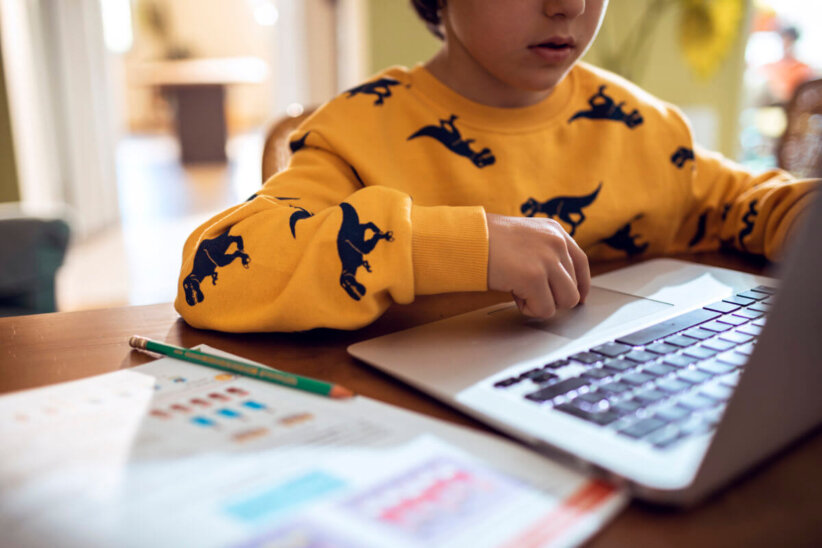Spring welcomes us to get outside more, so why not take science and art activities outside. You and your family can STEAM into spring with these fun activities that bring science and art together.
Whether you examine how plants grow, play with the shimmering shapes of bubbles, or explore magical color changes with pH experiments, get curious and creative, and STEAM into spring.
Fizzy, Color-Changing Fun
Wild violets are an early spring flower that often dot grassy areas. You can use the flowers to create a pH indicator that can be used for color changing experiments.
Activity:
A pH indicator demonstrates whether another substance is a base or an acid. To make the pH indicator, start with two cups of wild violets. If you don’t have wild violets handy, purple cabbage from the store works too. Put the violets or chopped cabbage in a heatproof container and cover with boiling water. Let it sit overnight.
In the morning, strain out the solids and keep the colored liquid. This is your pH indicator. Divide it into separate clear containers, and use it to experiment with safe, easily accessible materials.
Ask:
• What happens when you add a base, like baking soda?
• What happens when you add an acid, like vinegar or lemon juice?
• Find out how other substances react.
• What happens when you combine your acid and your base?
Adding a base should turn the indicator a murky green. Adding an acid turns it bright pink or magenta. When the two are combined, the color will shift back toward the original, and, because of the acid-base combination, fizz.
Art Project:
To explore pH and make art, soak white paper or card stock in your violet/cabbage water. Let the paper dry overnight. Then use lemon juice and a baking soda/water solution to paint on the paper. Wherever you paint will change color.
I’m Forever Blowing Bubbles
Bubbles aren’t just for little kids. Playing with bubbles is a great way to explore liquids and surface tensions. The soap in soap bubbles changes the surface tension and keeps the film of a bubble from drying out too quickly.
Activity:
Mix up some bubble solution: 1 cup dish soap, 6 cups water and 1 Tbsp. glycerin (found in most pharmacies). You can also experiment to see what works best. Note that weather can affect bubbles, so if at first you don’t succeed, try again another day!
Experiment with different ways of forming bubbles. Some ideas:
•Bubble wands from bubble sets
•Drinking straws (remind kids to blow, not suck)
•Kitchen implements such as slotted spoons, cookie cutters and grid-style potato mashers
• Dowels with string attached in two places (slide one end of the string to close off the bubble)
•Coat hangers
•Fingers
Ask:
•Which objects work the best?
•What kinds of bubbles does each make?
•Does the shape of the opening matter?
• How big a bubble can you make?
• Can you connect bubbles?
• What do the bubbles look like? What colors do you see? Is the surface dull or glossy?
Art Project:
Make bubble art. (This is a good outdoor activity.) In a jar, combine washable paint or food coloring with a soap and water mixture. Place the jar in a wide, shallow pan. Have kids blow bubbles with straws, allowing bubbles to overflow into the pan. Lightly place paper over the bubbles. Flip the paper over and allow to dry.
Watch It Grow
Spring is a time of growth or change for many plants. Plant seeds and note changes as they grow. Beans sprout quickly and the large seeds are easy for little fingers to manipulate.
Activity:
To see what’s going on underground, poke some holes in the bottom of a clear plastic cup. Fill the cup with potting soil. Press your seed into the soil next to the edge of the cup. Do this for several different seeds. Keep the soil moist.
Ask:
Within a few days, you should see tiny roots beginning to emerge and then a sprout.
•Did one type of seed sprout before the other?
•Measure the sprouts daily to record their growth.
•Discuss what seeds need to grow into plants (soil, water, air and sunshine).
Art Project:
A garden, even a container garden, provides opportunity for sketching, painting or photography. Try to capture the same plant from different angles or in different light and from wide views or close ups. Focus on the process of observing and pay attention to detail.
Sara Barry is a writer based in Massachusetts who loves exploring science and nature with kids throughout the changing seasons.








